Using blur and showing motion is a fine art in photography. It can be a very useful tool and can make a picture just what you want it to be.
But, one needs to be careful and use motion blur photography wisely, or the viewer will not see your vision.
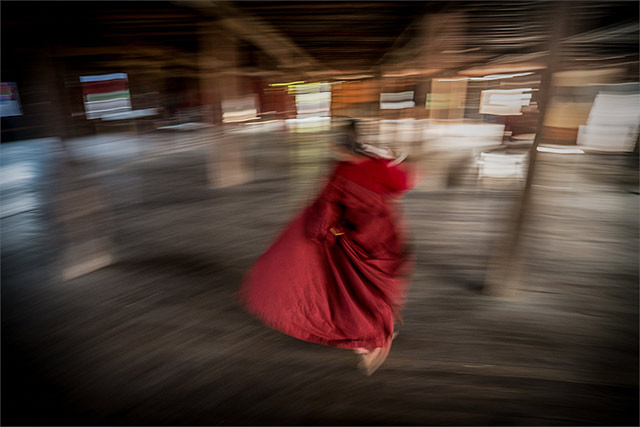
After years of experimenting with blur, these six ultimate tips will guide you towards creating great images.
1. Blur is a Tool, not a Magic Trick
You’ll need to know when blur should be used and that it is intentional. You can even plan ahead. If you know the location in which you will be photographing you can even visualize images before you ever get there.
Since you are familiar with the area, you can see in your mind’s the sharpness of a specific subject against a background that blurs past them or… Let your visions guide you, but remember, stay open to all that is around you so you don’t miss out on other great photo opportunities.
Some may think that using motion blur photography for its own sake, adds razzle dazzle to the picture, but that is untrue. It just gets in the way and pizzazz over substance is easy to detect.
Using movement and creating blur makes sense if the idea of say, speed, dreamscape, or a soft ambiance is the goal of the image, but it isn’t something that can be universally applied to make any photo better.
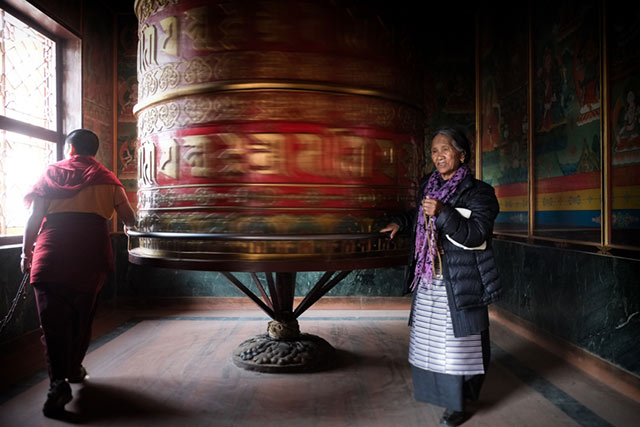
Like spice on a great dish, use blur sparingly.
Guidelines for Motion Blur Photography
2. Don’t Blur Your Story
You need to know what story you are going to tell before you tell it. So, before deciding if you need motion in your photo, decide what your photograph is going to say – the story it will convey to the viewer. Many think random or off the cuff photos yield better blurry pictures, but more often than not, it will take a lot of thought and preparation in order to create a really great image.
Take a look at your scene and think, “What story am I going to tell with this photo?”
Think about the process used to tell the story. Will it have to do with motion and life, or a little bit of ethereal mystery? These things will have entirely difference processes to achieve a good result, so planning before the shutter button is pressed is of key importance.
3. Make Blur Contrast Work for You
Good photographers understand contrast, such as light vs dark, soft vs sharp and what is static or shows motion within the image frame. They understand that contrast is a key component necessary in order to create a great image.
In photography, continuous movement means total chaos.
It is generally never all or nothing for a photo. Blurring works best when only a part of the photo is blurred, that way the sharper part is in high contrast, and that is what actually conveys the speed, etc. So part of the decision making process in the setup phase is determining what part of the photo you are going to blur and why.
And remember, this is in combination with the story you want to tell.
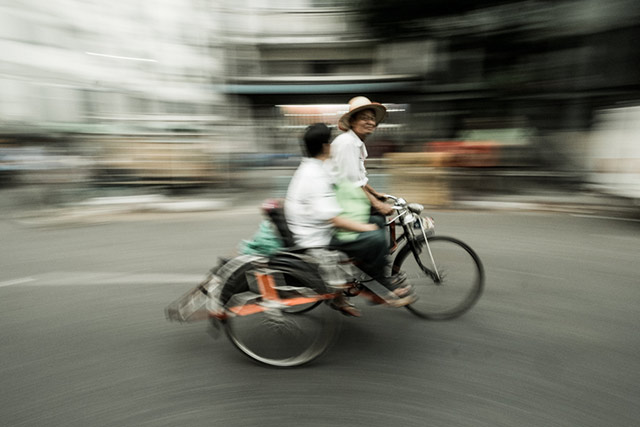
4. Choose the Best Shutter Speed
Normally when you want to blur a photo, you use a slow speed. But, the shutter speed will always depend on how fast the object or person you want to photograph is moving, and what angle they are in relationship to you and your camera.
For example: If someone is walking directly at you, in a straight line, the speed you want in order to create a sense of motion is probably quite slow, 1/8 of a second or less, but if that same person is walking left to right, crosswise from you, you need to speed it up to about 1/20 sec.
And of course, if you want to create movement… you need moving subjects. Someone just standing or sitting could be photographed at speeds as low as ¼ sec., and appear static. Even at this speed a still image may not show any motion at all if said subject isn’t actually moving.
So, different scenes call for different speeds. A cyclist going full tilt down a hill is clearly different, as subjects go, from a devotee bathing at Varanasi. Plus, you yourself need to decide just how much motion you want to show and why.
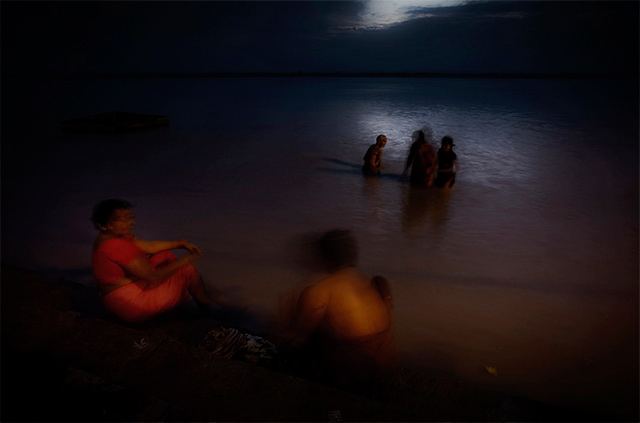
In the case of the devotees in Varanasi, which I had the great opportunity to photograph, I did not want to reflect speed so much as a sense of the ethereal. Creating a dreamy atmosphere with blur means only the slightest sense of motion, as opposed to what I would do for a busy street scene.
For mass motion of crowd scenes, open exposure is best. You want to let the moving subjects ‘dirty’ the picture with their movement so that what stays crisply static is in sharp contrast.
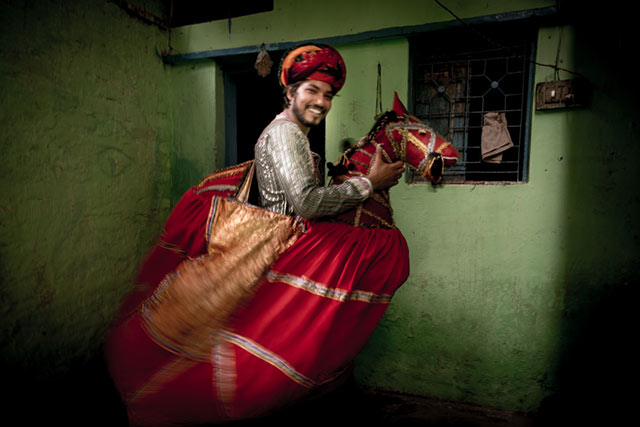
5. Mistakes Are Going to Happen – That is Ok!
Though shutter speed is crucial, it is one of the two factors involved with the idea of motion or blur. You must also consider the ISO and it will need to be adjusted accordingly in order to let you create an image with quality exposure.
The best advice I can give is to set the camera on Speed Priority (perhaps ‘S’ on any given camera), and let it auto adjust the f-stop. Try different speeds and check the results. Adjust the ISO based on the auto f-stop and all will go much quicker. Then prepare everything and you’ll be ready for the moment when it comes – ready to make that final picture.
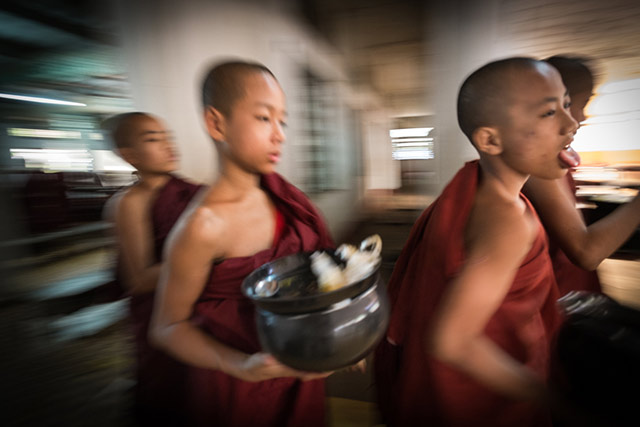
Just as athletes need several rounds of warm-up exercises before they start their strenuous endeavors in earnest, so do photographers. Normally they need to make several test images before they are ready for their final photo.
As aforementioned, using blur and motion requires prep time, so take it. After all, the digital age has given us the gift of instant viewing and the ability to make many images in a trial and error sort of way, so make a lot of adjustments, take a lot of photos, and expect that only a small percentage will come out just like you envisioned.
6. Luck is Part of the Equation
If there is any time when you need a bit of luck, it may just be during those times when you are capturing movement. But, the worst you can do is leave it all ‘up to luck’.
It seems to be my mantra, but I will say it as many times as I can; planning is the key ingredient.
If you want that one lucky photo, you need to prepare and set yourself up in advance.
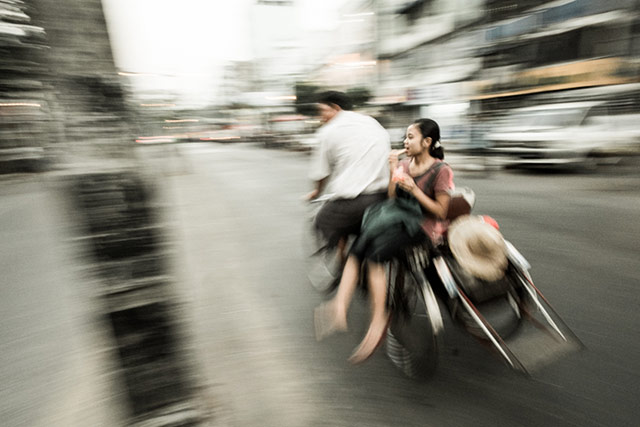
When you want to work with something as entirely unpredictable as motion-based images, there is no way around this. Normally, I myself get situated in my chosen venue and then make picture after picture at every imaginable speed. It isn’t surprising if I find myself there for over thirty minutes or more in that same spot.
But, if I am there with one eye looking through my camera view and the other on my scene, then chances are that ‘luck’ is going to venture my way. It just takes patience and dedication and a willingness to wait for that perfect moment.
motion blur photography article By Harry Fisch
Text and images: © 2015 Harry Fisch. All rights reserved.

Leave a Reply